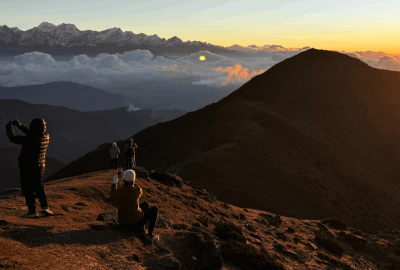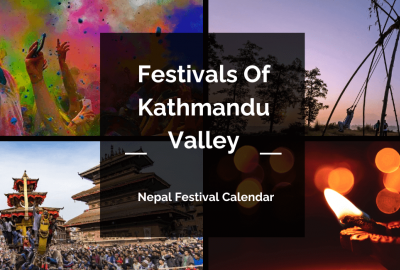Patan Durbar square is a well-known tourist attraction and is listed as a UNESCO world heritage site. Filled with specimens of culturally rich architecture and designs, it is a stunning display of Newari artistic skill. The former royal palace is situated in the heart of the durbar square. The palace has been turned into a museum and presently houses bronze statues, sculptures, and religious objects. Most of the temples were constructed in the 14th to 18th century during the Malla period and were made primarily from 1619-1660 during the reign of King Siddhinarsingh Malla.
Table of Contents
Plan your trip to Nepal
Customize your trip with help from a local travel specialist.
Patan is the oldest of the three cities in Kathmandu valley and is situated on a plateau across the Bagmati river. Known for its artistic heritage and it is also considered to be one of the oldest of Buddhist cities and was also the most prosperous in the olden days. Another name for Patan is Lalitpur. Legend has it that the famous emperor Ashoka built 4 stupas that surrounded the 4 corners of Patan and is architecturally precious to Patan. The Patan that we see today is filled with Hindu temples and Buddhist monuments with wondrous and enchanting designs and inscriptions. This has made it be quite a catch for the visitors and hence draws a lot of tourists who wish to witness these monuments firsthand.
Patan was considered to be a very prosperous city of the ancient era. It is believed that major changes have been brought to Patan Durbar Square by the kings Purandarasimha Malla, Sivasimha Malla, and Yoganarendra Malla. With 136 Bahals (courtyards) and 55 major temples, Patan Durbar Square is a center for both Buddhism and Hinduism.
Major Attractions in Patan Durbar Square
If you do find yourself here while visiting be sure to check these places out:
Krishna Mandir
Constructed in 1637 by King Siddhi Narasimha Malla, it is one of the most remarkable stone temples ever built in Shikhara architecture. Told to have taken only 6 and a half years to build in an era that lacked modern construction technologies, this temple was seen as an engineering marvel. It is considered to be the most important temple in Patan durbar square and is adorned with stories of Mahabharat and Ramayana etched into its stone walls. Built as an homage to Lord Krishna this temple showcases sculptures and imagery of Lord Krishna, Radha, and Rukmini inside it.
Bhimsen Mandir Temple
Bhimsen Mandir was built in 1680 and is found on the left side of the Durbar Square. Dedicated to the Newari God of traders, Bhimsen, there's a tall pillar and fire pit opposite it dedicated to rituals made in his behest. Crossing over to the other side, you'll see a large sunken water body called Hiti. It still functions although its gates have been damaged with time.
Keshab Narayan Chowk
The door is running along the wall of the old palace which leads to a part of Patan Museum. If you enter the door, you will get access to Mul Chowk and Sundari Chowk.
Mul Chowk
Known as the heart of Durbar Square, Mul Chowk was built in 1666. The renovations for the damage done by the earthquake have nearly been completed. While it is beautiful, the only religious aspect here is the figures of the Goddesses of the river system, Ganga and Jamuna. The chowk was heavily decorated two decades ago but the woodwork was unfortunately stolen. If you walk through it, you will get to Sundari chowk.
Sundari Chowk
The centerpiece for the chowk is the Tusha Hiti stepwell in the heart of the chowk. It was built by King Siddhinarasimha in 1647 for cleansing rituals.
Patan Museum
Displaying the architectural setting and the traditional art form of Nepal, the Patan Museum has been built into the royal palaces' courtyard of one of the former Malla kings of Kathmandu valley. The museum was home in the 17th century to King Narsingh Malla. This museum boasts metal artifacts, stones, and sculptures that are ethnic to the eastern civilization and are thousands of years old. Miscellaneous artifacts dating back to the Lichhavi period such as paintings and inscriptions are also on display here.
The main attraction, however, is the throne of King Shree Niwas Malla of the 17th century. The museum sets a wonderful description of Hindu and Buddhist arts, crafts and designs. Pictures of ancient Lalitpur and Kathmandu cities are also displayed in the museum.
Golden Temple
Located approximately 200 meters North of the durbar square in the Kwabahal Tole, the Golden temple is also called Suwarna Mahavihar and Hiranya Varna. Guarded by two stone elephants, the copper-plated pretense is surrounded by a courtyard and was built in the 12th century by King Bhaskardav. There also lies a gorgeous statue of Shakyamuni Buddha inside the temple and contains a Swayambhunath Chaitya is a small shrine facing the temple. With Lokeshwor Gumba lying within the courtyard, the Golden temple is an excellent example of courtyard temple architecture.
Statue of Yog Narendra Malla
Located near the Jwala Narsingh Temple, the statue of King Yog Narendra Malla is sitting above a huge stone pillar. King Yog Narendra Malla built the statue in 1692 AD along with the statue is the statue of Siddhi Narsingh Malla II, his son. King Shree Niwas Malla was the father of King Yog Narendra who had to gain the throne by revolting against his own father, King Siddhi Narsingh Malla. In an ironic twist of fate, King Yog Narendra Malla too revolted against his father, King Shree Niwas Malla, in order to gain the throne.
King Yog Narendra Malla had a strong faith in religion and was a wise king. Given this nature, he constructed many temples and started many festivals. King Yog Narendra was born in 1667 and was believed to have died in 1705. One of the many tales and historic rumors tell us that he was poisoned at the age of 38 while other theories say that he gave up his throne after the death of his son.
Entry Fee
The fee to enter Patan Durbar Square is Rs 1000 and the museum fee is also included in it. The durbar square is culturally rich and a serene place to stay and enjoy.
The floor of the durbar square is layered with bricks and benches have been placed around the square and you can often find it jam-packed with people from all walks of life.







